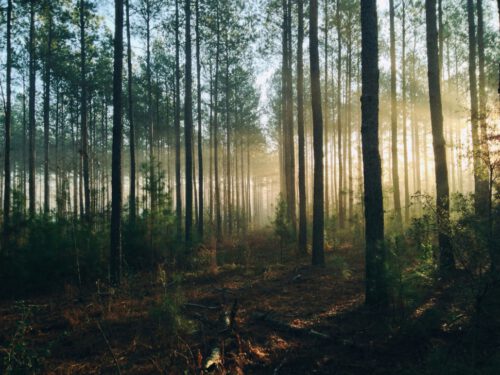Article
State Climate Corps Are Needed to Save Eastern Forests

Article
Fact-based, data-driven research and analysis to advance democratic debate on vital issues shaping people’s lives.
Center for Economic and Policy Research
1611 Connecticut Ave. NW
Suite 400
Washington, DC 20009
Tel: 202-293-5380
Fax: 202-588-1356
https://cepr.net
Don’t be fooled by the green leaves. From Maine to Virginia, the data suggests that nearly 70 percent of Eastern forests are dying. Deer overpopulation and invasive plants and insects are killing young native trees. In the Eastern forests, the green leaves increasingly belong to invasive trees, shrubs, vines, and grasses. The Eastern forests of yesteryear may soon be extinct. This disaster is preventable if the US invests in a larger workforce dedicated to protecting the environment and responding to climate change. This role can be filled by state climate corps.
Figure 1 shows the findings of a study published last year assessing the health of Eastern forests in 39 national parks. The researchers found that 12 of the park forests face imminent failure, and another 15 face probable failure. In other words, 69 percent of these native forests are facing death. Another 11 are insecure. Only 1 of the 39 forests is secure.
Figure 1
As one might expect, a great deal of work is needed to save these forests. The authors of the study state:
“Protected forests such as those in eastern national parks require increased and sustained investment in natural resource management to secure sufficient regeneration and thereby ensure the persistence of these forests for future generations. These efforts are most important for parks classified as imminent and probable failure for regeneration debt, as these parks are likely to lose forest cover without intervention.”
In some areas, volunteers are doing their best to remove invasive species and plant native ones, but this is not enough. For example, the executive director of an organization working with volunteers to save a national park in Washington, DC estimates that, at the pace they are working, it will take them about 100 years to clear out the currently existing invasives and replace them with native flora. But in 100 years, all of the invasives would have regrown and spread, and there would be no native forest to save.
States need a large dedicated professional staff working to save their forests. A large state climate corps could do this work. Last year, the Biden Administration launched the American Climate Corps (ACC) to provide opportunities for young people to begin careers in clean energy, conservation, and climate resilience. Unfortunately, the ACC does not have sufficient funding to meet its aspirations. (Congress could fix this.) The Administration wisely turned to the states to join in the effort. At the time of the launch, only 10 states — two in the East — had or were planning to establish climate corps.
All Eastern states should have state climate corps. Even the states that currently do have climate corps likely do not have large enough corps to quickly address the challenges to the Eastern forests. More needs to be done.
In looking for individuals to do this work, states should not screen out the formerly incarcerated. In Washington, DC, Wayne Parker, who was formerly incarcerated, says that working to restore the forest in DC has helped him heal and has brought him peace. In California, The Forestry and Fire Recruitment Program works to provide firefighting opportunities for formerly incarcerated prisoner-firefighters. (California relies heavily on prisoners to fight forest fires.) Delaney Montoya, who has been in the program, states, “[Nature] means a lot. I want to preserve it. . . . I love the outside. I love animals. I love the earth, and I just want it to survive.” The formerly incarcerated should not be denied the opportunity to be full-time, professional climate corps workers.
The dangers and damage of invasive plants are not limited to the Eastern forests. The devastating Lahaina wildfire in Hawaii was fed by non-native grasses. All states have problems that could be solved with a strong climate corps program. State legislators should invest in these corps.